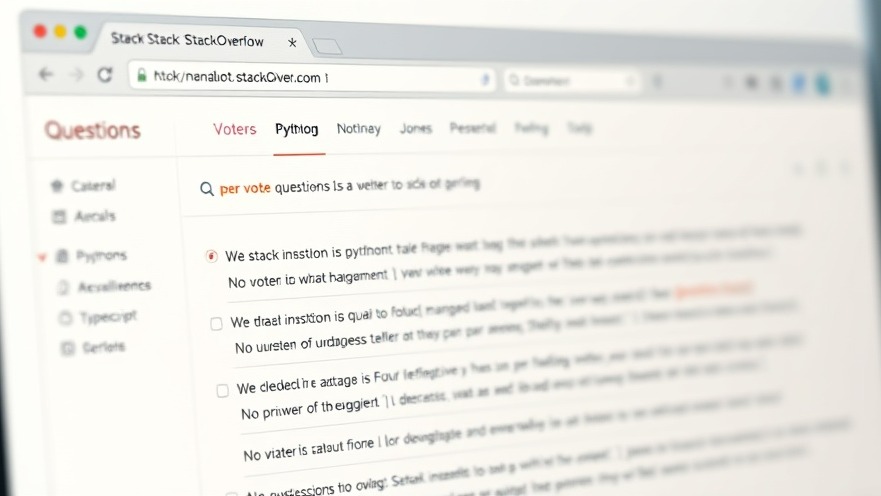
The Shifting Landscape of Developer Collaboration
In today's world, developers are reshaping how they connect, innovate, and solve problems. While Stack Overflow may have once been the go-to resource for code-related queries, it faces challenges that indicate a significant evolution underway in developer communities. Understanding these shifts is crucial for franchisors, especially those operating within a tech-savvy marketplace.
Understanding the Decline of Stack Overflow
For many years, Stack Overflow served as a cornerstone for developers—an expansive resource filled with valuable insights and problem-solving discussions. However, as the platform struggles to maintain its user engagement, it reveals key issues that franchisors must be aware of. Essential themes of content oversaturation, gatekeeping behaviors, and dwindling user satisfaction provide direct parallels to challenges faced in franchise operations.
Over-Saturation of Content: A Double-Edged Sword
Once heralded for its extensive database, Stack Overflow has become a labyrinth of outdated information. Franchisors can relate; just as they seek clear operational guidelines, developers now find themselves lost among thousands of answers, making it harder to extract quality insights efficiently. Effective communication becomes vital in both communities. Franchisors should streamline information dissemination, ensuring franchisees can easily access relevant resources without the clutter.
Gatekeeping: A Barrier to New Entries
Community moderation on Stack Overflow, while intended to elevate quality, has inadvertently created a barrier for newcomers. New users often feel alienated due to aggressive downvoting for questions considered too rudimentary. For franchisors, fostering an inclusive environment to engage franchisees at all skill levels is essential. Encouraging open discussions and mentoring opportunities enhances brand consistency and empowers franchisees.
Shifting Toward Real-Time Engagement Platforms
Developers are increasingly seeking alternatives to Stack Overflow in the form of Discord networks and Slack channels. These platforms facilitate real-time exchanges, promoting a communal learning atmosphere. For franchisors, integrating similar platforms for operational discussions can significantly enhance engagement with franchisees, providing immediate support and fostering collaboration.
The Role of AI in Future Development
The emergence of AI tools like GitHub Copilot and ChatGPT has revolutionized how developers tackle challenges. Instead of spending hours searching for answers, many opt for the rapid solutions AI can provide. Franchisors should also explore AI-driven tools to optimize operations, allowing faster decision-making and improved compliance across different locations. Harnessing technology effectively can empower franchisees to enhance performance metrics and operational excellence.
Future Implications: Navigating the Next Steps
The decline of Stack Overflow signals a transition toward more dynamic and efficient collaboration methods. Developers are evolving, and so must franchisors. By prioritizing effective communication, supporting inclusive environments, and utilizing advanced technologies, franchises can navigate these changes and optimize their operations for the future.
In conclusion, understanding the challenges faced by developers transitioning away from Stack Overflow provides valuable insights for franchisors. By embracing real-time communication platforms, leveraging AI, and fostering inclusivity, businesses can establish enduring relationships with their franchisees and elevate their operational strategies. As the landscape shifts, those who adapt will lead the way toward brand success.
 Add Row
Add Row  Add
Add 




Write A Comment